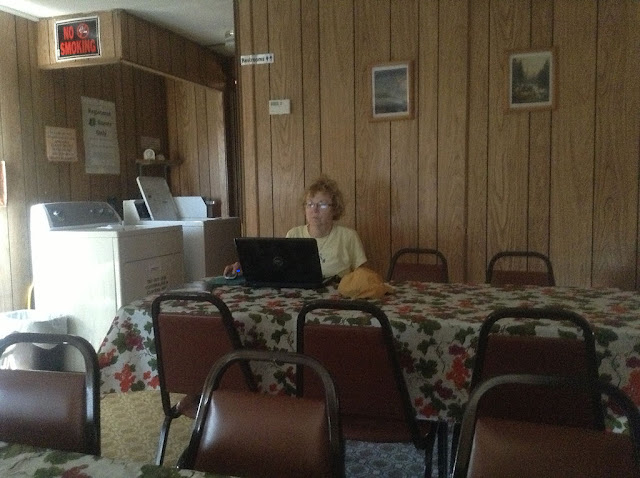April 29, 2013
We knew the drive we planned to take on 170 out of
Terlingua up to Fort Davis was a scenic drive, but we didn’t realize just how dramatic
it would be. This drive—the “River Road” to/from Big Bend National Park—has
been designated by National Geographic as one of the most scenic drives in
North America, and we see why. Unfortunately, our photos don’t do it justice,
as they just can’t depict the vast emptiness and stillness and jawdropping 360-degree
views. The road winds through Big Bend Ranch State Park, a relatively new park
that is next door to the national park, and follows the Rio Grande River for
about 60 miles. This state park is much less developed than the National Park
(which hardly seems developed at all).
 |
| As we drive along, scenes like this just keep changing and changing. |
One of the exciting (terrifying??) things about the drive
is that the road hasn’t been smoothed out much; it follows the contours of the
land, going steeply down into the canyons and then straight up the mountain, so
it’s like a rollercoaster ride. At the top of the hills, you can’t see the road
ahead of you, and it feels like you might drop off into emptiness (like it
feels when you start down our driveway at home, except this goes on for miles).
At every bend and drop, you encounter a completely different, stunning view of
mountain and river vistas with carved, sculpted, rocky mountains of just about
every possible color and shape that rock can assume. I just can’t come up with
words to describe this drive—and you’re probably getting tired of me
trying. But it was unbelievable.
 |
| Eventually the road just goes up and over the mountains. |
We stopped at a few places to try to capture the beauty
of the place. In one canyon where we stopped, a single dove was calling and the
call echoed and was amplified by the rock walls—very eerie. We were the only
car on the road, and the silence, other than the dove call, was almost heavy in
your ears. This is WILD country, and we’re so glad it’s being preserved in its
wild state.
 |
| As we descend down one of the mountains, we stop at one of the unique rest stops. |
After we left the state park, we drove through the small
town of Presidio, and had lunch at El Patio, a restaurant on the main drag,
that had been recommended to us. Food was Mexican, of course, and tasty. It
seemed that everyone else in the restaurant was Hispanic and everyone but us
was speaking Spanish. Hard to tell this place from a Mexican town.
Next we headed to an RV campground in Fort Davis, which
is near the Davis Mountains state park with reported good birding, and also near
the McDonald Observatory, which we plan to check out tomorrow. They have star
parties on Tuesday evenings and we hope to view the heavens through some of
their famous telescopes. This area has the best dark sky viewing in the lower
48, we hear.
 |
| After leaving Presidio we get stopped at a border control check point |
Fort Davis is quaint, historic and filled with birds. We
just sat outside the RoadTrek for a couple of hours and watched the birds in
the trees around us. I’m still hoping for the painted bunting…we’ll see what
tomorrow brings.
State count: 8 [Virginia, North Carolina, South Carolina,
Georgia, Tennessee, Arkansas, Oklahoma, Texas]
Odometer count:
Surber, VA: 107,435
Fort Davis, TX: 110,921
Accommodations avg cost: 25 nights @ $15.76/night
Where we are:
























